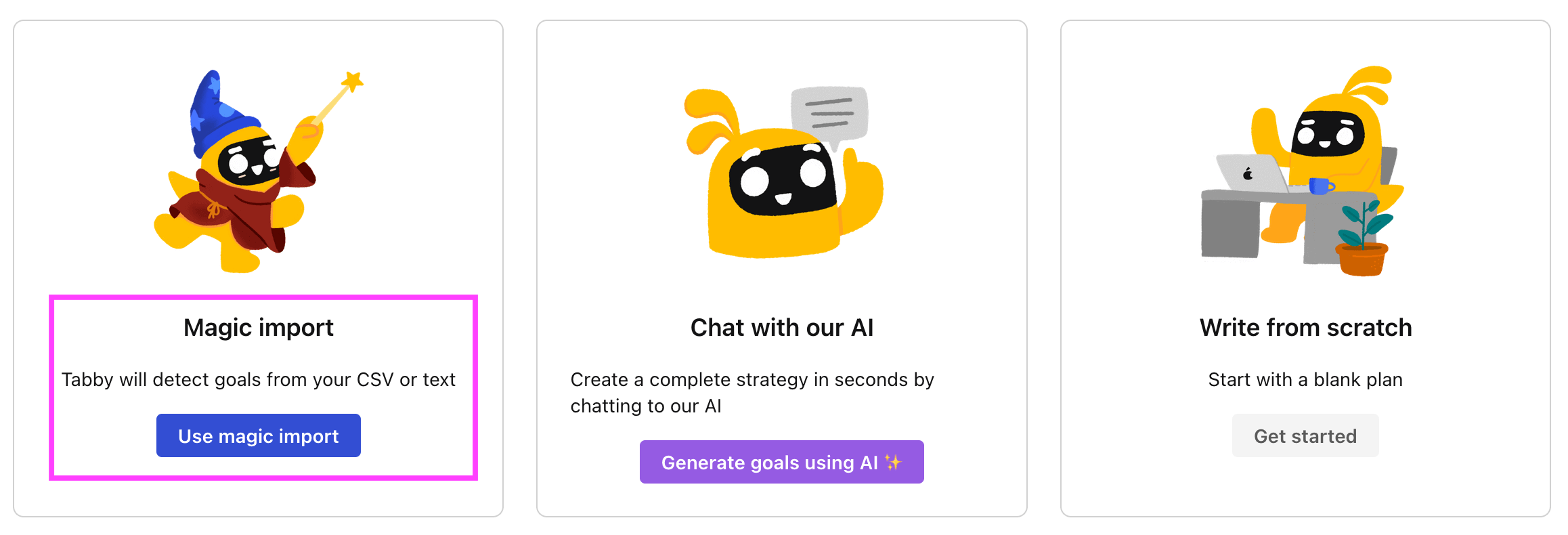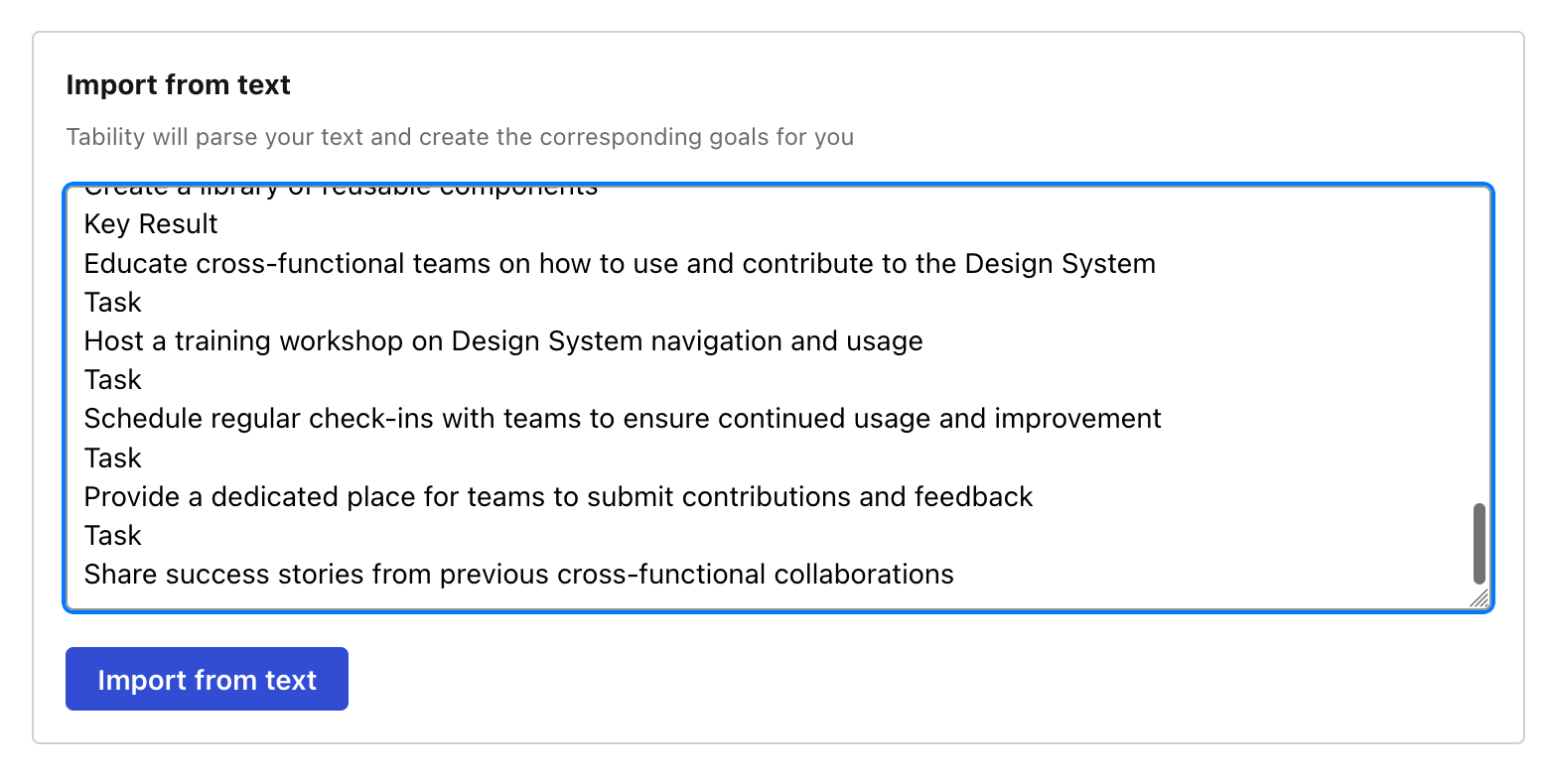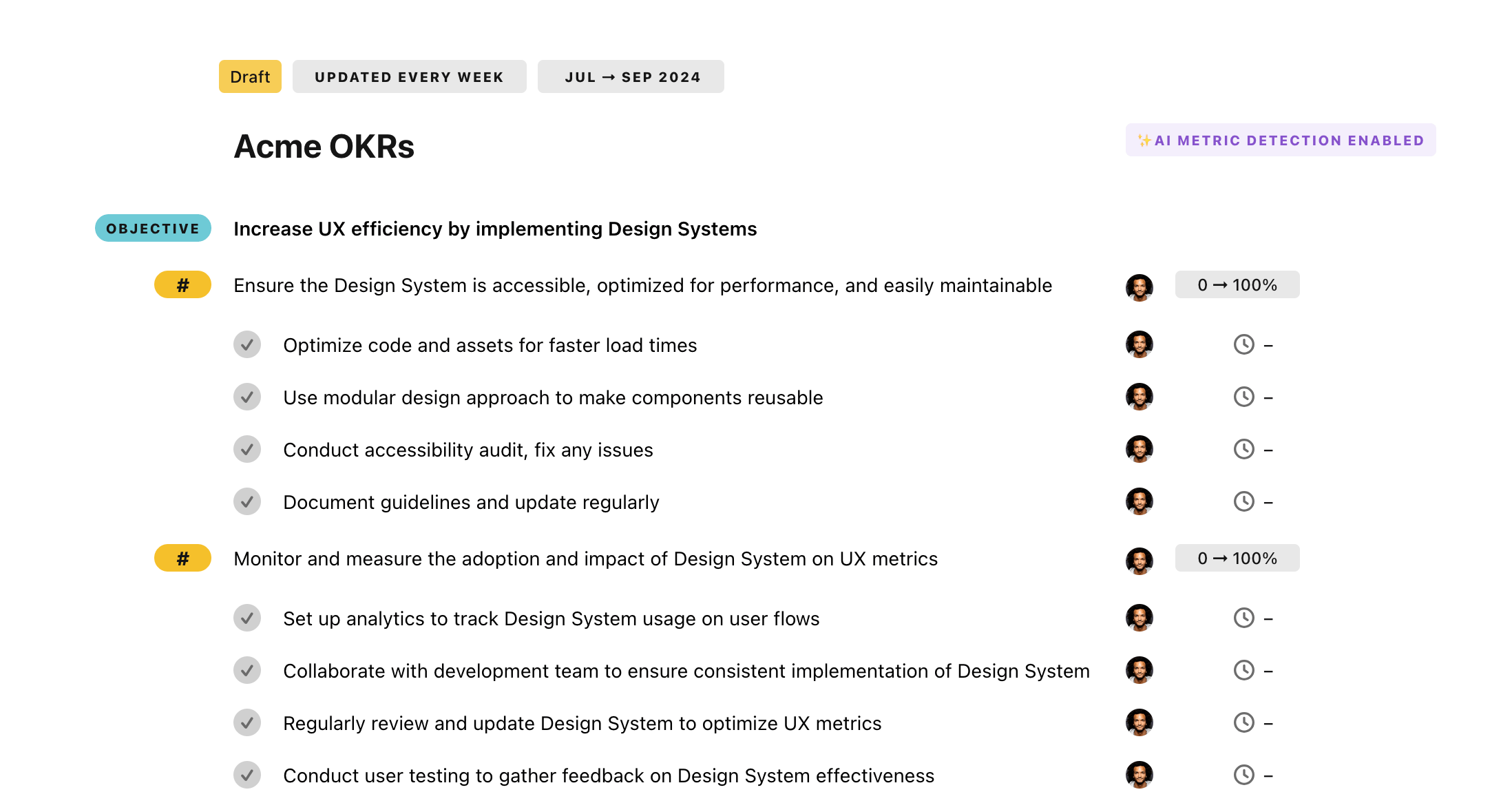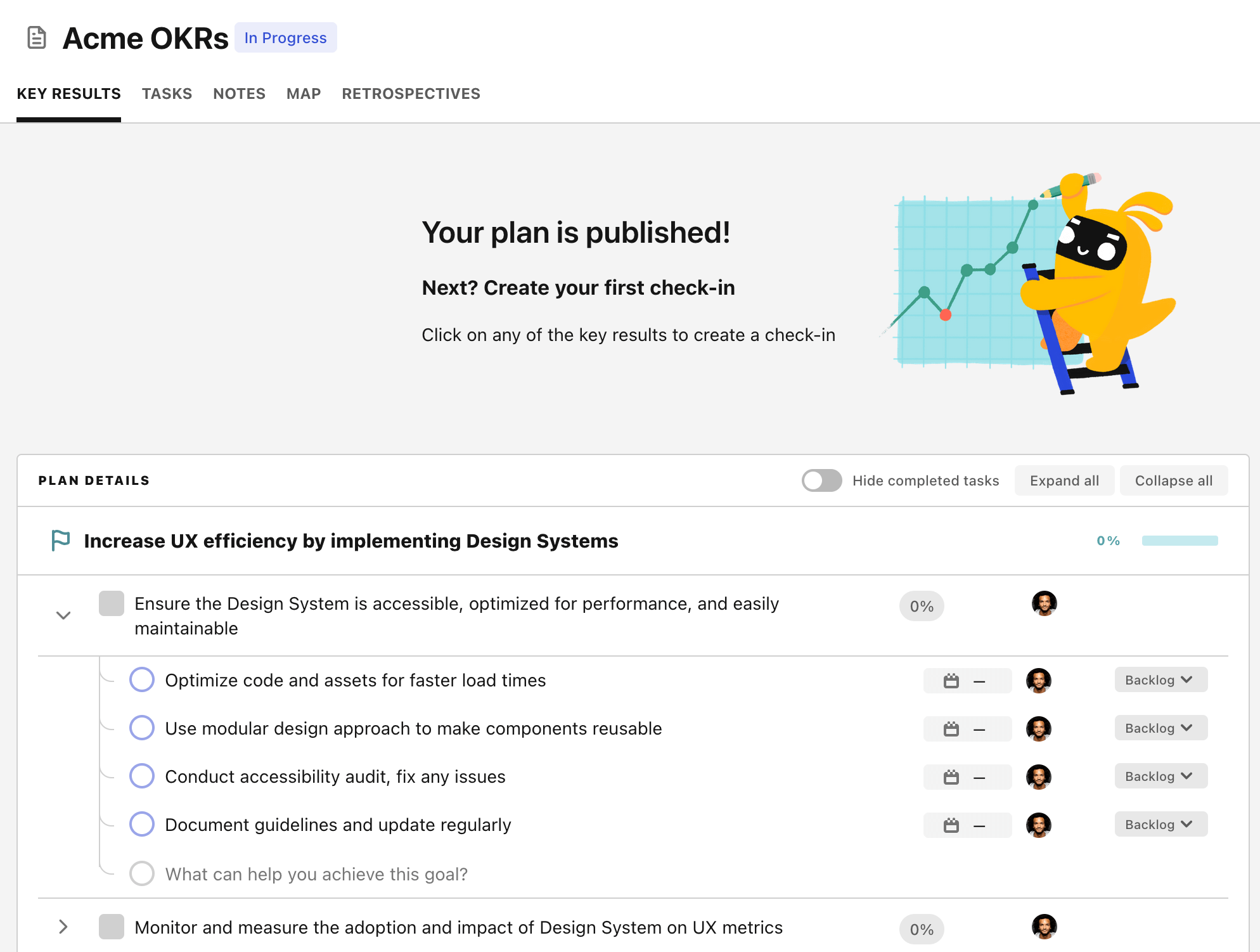OKR template to improve product quality by ensuring teams identify and mitigate risks
Your OKR template
The second objective includes conducting quarterly training to equip teams with skills for risk identification and prevention. The effectiveness of this training will be evaluated through feedback and metrics to make suitable adjustments when necessary. The developed training materials will also provide crucial resources for practicing habits that avert risks.
Another objective targets to address at least 80% of the identified risks with mitigation strategies. This includes analyzing all potential risks through thorough assessments, developing specific measures for each risk, and prioritizing the most impact-driven ones to reduce their likelihood.
The last objective in this OKR focuses on reducing the occurrence of quality-related issues by 10%. Feedback from customers will be analyzed to identify root causes of problems, with corrective action plans being designed and implemented accordingly. Further training programs will also effectively improve quality control processes.
ObjectiveImprove product quality by ensuring teams identify and mitigate risks
KRIncrease the number of identified risks during the product development process by 20%
Conduct regular risk assessment sessions to proactively identify potential risks and solutions
Encourage open communication to enable team members to report potential risks promptly
Provide training and resources to enhance risk identification skills of product development teams
Implement a comprehensive risk identification framework for product development teams
KRConduct quarterly training sessions for teams to enhance risk identification and mitigation skills
Evaluate and assess the effectiveness of the training sessions through feedback and metrics
Develop training materials and curriculum for risk identification and mitigation
Schedule and coordinate quarterly training sessions for all teams within the organization
Facilitate interactive exercises and case studies to practice risk identification and mitigation
KRImplement risk mitigation strategies for at least 80% of the identified risks
Implement and monitor the effectiveness of risk mitigation strategies for at least 80% of risks
Conduct a thorough risk assessment to identify potential risks
Develop specific risk mitigation strategies for each identified risk
Prioritize identified risks based on their potential impact and likelihood
KRAchieve a 10% reduction in the occurrence of quality-related issues reported by customers
Analyze customer feedback to identify root causes of quality-related issues
Develop and implement corrective action plans based on root cause analysis
Implement training programs for employees to improve quality control processes
Conduct customer surveys to identify common quality-related issues
How to edit and track OKRs with Tability
You'll probably want to edit the examples in this post, and Tability is the perfect tool for it.
Tability is an AI-powered platform that helps teams set better goals, monitor execution, and get help to achieve their objectives faster.
With Tability you can:
- Use AI to draft a complete set of OKRs in seconds
- Connect your OKRs and team goals to your project
- Automate reporting with integrations and built-in dashboard
Instead of having to copy the content of the OKR examples in a doc or spreadsheet, you can use Tability’s magic importer to start using any of the examples in this page.
The import process can be done in seconds, allowing you to edit OKRs directly in a platform that knows how to manage and track goals.
Step 1. Sign up for a free Tability account
Go tohttps://tability.app/signup and create your account (it's free!)
Step 2. Create a plan
Follow the steps after your onboarding to create your first plan, you should get to a page that looks like the picture below.

Step 3. Use the magic importer
Click on Use magic import to open up the Magic Import modal.
Now, go back to the OKR examples, and click on Copy on the example that you’d like to use.

Paste the content in the text import section. Don’t worry about the formatting, Tability’s AI will be able to parse it!

Now, just click on Import from text and let the magic happen.

Once your example is in the plan editor, you will be able to:
- Edit the objectives, key results, and tasks
- Click on the target 0 → 100% to set better target
- Use the tips and the AI to refine your goals
Step 4. Publish your plan
Once you’re done editing, you can publish your plan to switch to the goal-tracking mode.

From there you will have access to all the features that will help you and your team save hours with OKR reporting.
- 10+ built-in dashboards to visualise progress on your goals
- Weekly reminders, data connectors, and smart notifications
- 9 views to map OKRs to strategic projects
- Strategy map to align teams at scale